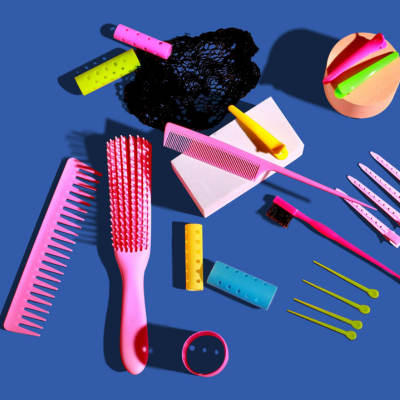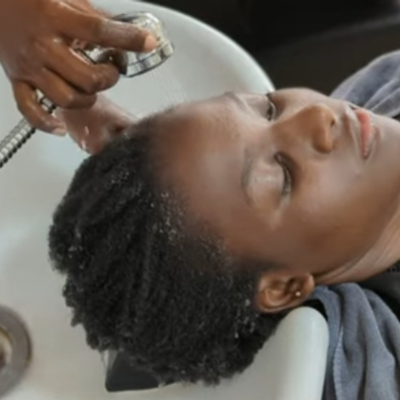- Support 24/7
- +1 (480) 468-4543
- livara@mylivara.com
Tips to Help You Easily Transition to Natural Hair

Why You Need to Tone Your Face with Apple Cider Vinegar
January 20, 2017Seven Foods That Are Believed to Make Hair Grow Faster
May 29, 2017First of all we welcome you on this fun and awesome hair journey and we are glad you are making the healthier choice for your hair. Transitioning to natural hair is a simple process. Well, for starters we were born with our natural hair in all its glory and as such, we are simply going back to our roots. It shouldn’t be so hard, right? The older we grew, most of us find it presumably “easier” to perm/relax our kinky hair to obtain the straighter hair. However with better products that are custom made to ease the management of our very diverse natural kinky hair, it is high time to transition back to our natural hair. And here are some tips to help you easily transition to natural hair: These tips will also help to make your journey simple and enjoyable.
1) Stop relaxing and dyeing your hair.
Oh yes! If you want your natural texture back, you have to stop relaxing your hair completely and cut down on the inorganic dyes you apply to your hair. This takes number one position in the tips to help you easily transition to natural hair! You want it natural, stop burning it. During this time treat your hair line with extra care because it is usually delicate. Also, be diligent about oiling/buttering your hair.
2) Avoid using extreme temperatures on your hair and keep the hair moist at all times.
Keep away from extreme temperatures of over 40˚C heat during this period. There are many gorgeous styles that can be achieved without heat. The most common source of extreme temperatures for our natural kinky hair is when we use blow driers. To avoid this, get yourself a good detangling leave in conditioner which will soften your hair and make it easy for you to style your crown. Also, casinos en peru after washing your hair, consider doing twists, bantu knots or tuts immediately. These will hold out and keep your hair a little straighter and detangled as it dries. Keeping away from extreme temperatures keeps your hair healthier and stronger.
3) Invest in Moisturizing Shampoos
Kinky hair loses its natural oils so fast and because of this, you need to invest in good moisturizing shampoos that will not strip your hair of all its natural oils but instead add onto them whilst keeping your hair clean at the same time.
4) Invest in good detanglers and be patient with your hair while detangling it.
Our natural kinky hair coils up a lot naturally and despite the fact that is is the reason behind the beauty of kinky hair, it is also the main source of “annoyance and headache” for many naturalistas. The process of removing the coils is what is termed as detangling. To ease this process, you need to use oil rich leave in conditioners that will not only strengthen the hair strands but also soften them so much that we easier style your hair. Most detanglers are thick liquids (with lotion or cream texture) that you apply to your hair. These liquids will temporarily wet your hair to make it easier for you to detangle. You may use your fingers to detangle or a wide toothed comb, if you please. It is also good to work your way from the tips to the roots. Also, do take some time to enjoy the process.
5) Get in the habit of using satin bonnets, satin pillow cases and stretchy silky head wraps
One of the tips to help you easily transition to natural hair involves you acquiring the habit of using satin bonnets, pillow cases and stretchy silky head wraps. These are not good water absorbing materials and so will not strip your hair of its moisture as you enjoy slumber land. These three very important pieces of clothe a must have for naturalistas and they help us protect our hair at night or even as we go about our home work whenever. Did you know pillows can break your hair as your toss and turn in your bed? Anha! Now you now how to protect yourself against that!
6) Do protective styling.
Protective styles are simply hair styles that put as minimal stress as possible on your hair roots and strands. For example when braiding, opt for box braids instead of the tiny little super thin braids. Try out crotchet braids as these are sewn onto cornrows which hardly stress your hair, especially your hair line. Simply put, avoid styles that put too much tension on the temples and nape of your neck.
7) Moisturise at all times.
This is one of the important things to do when transitioning and when one is fully natural. It does not matter whether your hair is braided or not, always condition and oil/butter it. Natural kinky hair dries up fast and naturally. This is why you need to moisturize on a daily. Also, this will help to give your hair the thickness and length you so desire. The more you feed your hair well and adequately, the faster it grows. There are also several techniques of deep conditioning and treatments that will beef up the health of your hair, eg pre-poos, deep protein treatments, etc… Remember, just like your body cannot survive without food, good healthy hair cannot survive without conditioners, butters, oils and treatments. And when all this gets too complicated, use a moisturizing spritz. Livara has the Tsavorite Moisturizing Spritz with guava leaf extracts already made for you.
8) Trim your hair regularly.
There are two main ways of “going natural.” Either you take the bold step of cutting off all your hair and go bald, or you trim off the permed/relaxed tips of your hair regularly until ALL OF IT IS 100% natural. Thereafter, trim the edges of your hair every three to six months. This helps to remove the split ends and also gives room for your hair to continue its growth process faster. When your hair is breaking faster than it is growing it creates an illusion of stunted growth so trimming every so often four weeks will help control split ends.
9) Avoid using woolen towels to dry your hair.
Woolen towels have a folds that will easily trap hair giving it a higher propensity to break. Towels can easily snag fragile curls causing more breakage and inducing frizz. Invest in some thick cotton hair clothes or cotton towels with as minimal folds as possible.
Above are a few yet critical tips to help you easily transition to natural. Of course there’s a lot more to learn but it is always better to take it a step at a time.




4 Comments
Thank you Livara. These are simple and easy to follow steps
Thanks for the tips, am thinking of moving from natural dreads to natural combed hair. The tips will help a lot.
We are glad you like the tips! We wish you the best in your transition.
Im very pleased to find this page. I wanted to thank you for your time due to this wonderful read!! I definitely savored every bit of it and i also have you bookmarked to check out new information in your blog.